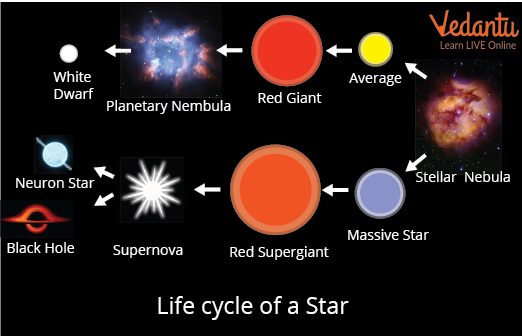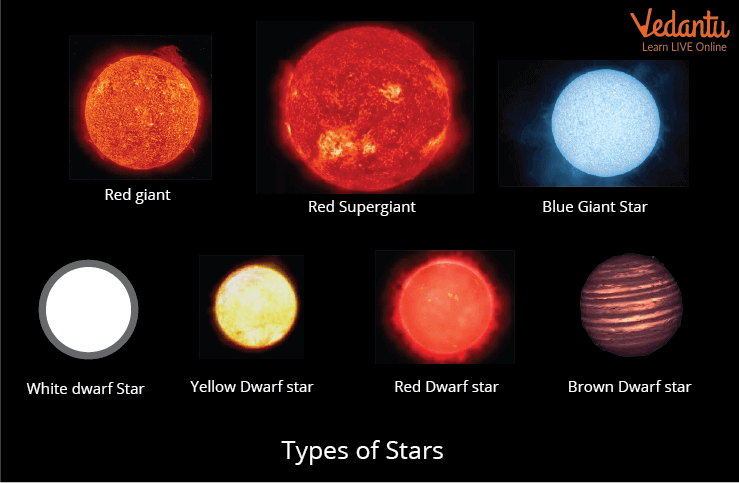




How Do Stars Shine? Key Features Every Student Should Know
Stars are very large and attractive balls of gases. There are numberless Stars in this universe. Stars can be seen without telescopes. The Sun is the planet's nearest star. Stars always shine in the night sky. Most of the stars are very far away. Stars are found in large groups which are called galaxies.
This galaxy contains hundreds of millions and billions of stars. There are also many galaxies in this whole world. All Stars are made up of a gas called hydrogen. Hydrogen produces a big amount of energy. In the stars the blue stars are normally very hot and the red stars are very cool. In the night sky, a blue-white star is the brightest object. The star comes to life with very imaginative and enjoyable activities.

The Night Sky
What is a Star?
Stars may appear as small-scale twinkling marks in the night sky but they are made up of wide burning balls of gas. Just think, it is a bright night and you are sitting outside, looking up at sparkling lights in the dark sky above you. You think about those stars and what they are made up of.
Stars twinkle because of our earth’s atmosphere. Stars start to shine sharp and brighter. Stars generate their heat, light and energy. Stars' colour always depends upon how hot it is. Stars have their own light.
Life Cycle of a Star

Life Cycle of a Star
A star starts its life cycle in a nebula or a district of gas and dust in space. Stars much like humans get taller and change through these stages of life. Let's assume the different stages in the life cycle of a star. The above picture can better explain the life cycle. In space, Stars much like humans get taller and change through these stages of life. In the following parts, let’s assume the different stages in the life cycle of a star. The below picture can better explain the life cycle.
How Many Stars are there in the Sky?
It’s impossible to know how many stars exist in this universe. Look up at the sky on a clear night and you will see thousands of stars. A few types of stars are as follows-
Red Giant Star
Red Supergiant Star
Blue Giant Star
White Dwarf Star
Yellow Dwarf Star
Red Dwarf Star
Brown Dwarf Star

Types of Stars
Facts about Stars
The night sky is full of bright stars and galaxies.
Adults and children both enjoy the vision of the night sky.
The milky way is the galaxy.
Skies are dark and clear and the milky way appears.
The most common type of Star is a Red Dwarf Star which burns very slowly.
The stars you see in the night sky are brighter, sharper and bigger.
Stars are different in colour depending on their temperature.
The sun is the first closest star to the earth.
‘Twinkle Twinkle little star…….’ is a real poem or song but stars do not actually twinkle.
Stars are made up of the same material.
Stars are at a complete level.
Characteristics of Stars
A star can be defined by brightness.
A star can be defined by colour.
A star can be defined by top temperature.
A star can be defined by size.
A star can be defined by mass.
Why do Stars Shine?
The stars shine in the night sky because of the result of our atmosphere. When the starlight comes in, our atmosphere is affected by air current. The shining of stars takes place due to the atmospheric refraction of the star's light. They have large fusion activators in their cores releasing a great amount of energy. They spark with the light throwback from a star. Stars shine by flaming hydrogen into helium.
Summary
In this article, we have learnt the definition of stars. We talked about the life cycle of a star and some characteristics and facts about it. We also named different types of stars and a very important question related to the shining of stars was also discussed above.
FAQs on What Is a Star? Meaning, Facts & Properties for Kids
1. What is a star in simple terms for kids?
A star is a giant, glowing ball of very hot gas, mostly hydrogen and helium. It creates its own light and heat from within, which is why it shines so brightly. Our very own Sun is the perfect example of a star, and it gives Earth all its warmth and daylight.
2. Why do stars appear to twinkle in the night sky?
Stars don't actually twinkle. They appear to because their light has to travel a long way to reach us, passing through the Earth's atmosphere. The moving air in our atmosphere bends the starlight slightly, making it look like it's flickering or twinkling. It's like looking at a coin at the bottom of a swimming pool.
3. Which star is the closest to our planet Earth?
The closest star to Earth is the Sun. It is the centre of our solar system and the reason we have day and night. All the other stars we see in the night sky are much, much farther away, which is why they look like tiny points of light compared to the Sun.
4. Why can we only see stars at night and not during the day?
Stars are always in the sky, even during the day. However, our Sun is so close and bright that its light scatters throughout our atmosphere, making the sky blue and too bright to see the much fainter light of distant stars. When our side of the Earth turns away from the Sun at night, the sky gets dark, allowing the light from faraway stars to become visible.
5. Are stars really star-shaped like the ones we draw with five points?
This is a common and interesting question! Real stars are not shaped like the five-pointed symbol we draw. In space, stars are giant, round balls of gas called spheres, just like our Sun. They only look like tiny, sharp points of light to us because they are incredibly far away.
6. Is the Sun the biggest star in the universe?
While the Sun looks like the biggest star from Earth, this is only because it's the closest to us. The Sun is actually considered an average-sized star. Many of the tiny specks of light you see in the night sky are actually stars that are hundreds of times bigger and brighter than our Sun.
7. What is a shooting star, and is it really a star falling from the sky?
A 'shooting star' is not actually a star. It's the streak of light we see when a small piece of space rock or dust, called a meteoroid, enters Earth's atmosphere at very high speed. The friction from the air makes it burn up and glow brightly, creating a beautiful but brief flash across the sky.
8. Do stars move or are they fixed in one place?
Stars do move through space, but they are so far away that their movement is too slow to notice in a lifetime. The movement we see every night, where stars rise in the east and set in the west, is not caused by the stars moving, but by our own Earth spinning on its axis.
9. What is a constellation and can you name one?
A constellation is a group of stars that forms an imaginary pattern or picture in the night sky. People long ago named them after animals, objects, or mythical characters. A very famous constellation that is easy to spot is Ursa Major, also known as the Great Bear, which contains the pattern called the Big Dipper.
10. What are some fun and amazing facts about stars for kids?
Certainly! Here are some amazing facts about stars:
- Stars have different colours like red, yellow, and blue, which tell us their temperature. Blue stars are the hottest, and red stars are the coolest.
- The light from a star travels very fast, but because space is so big, the light we see from some stars left them thousands of years ago.
- There are more stars in the universe than there are grains of sand on all the beaches on Earth.
- Our Sun is a yellow dwarf star, and it is about 4.6 billion years old.









